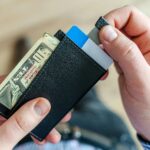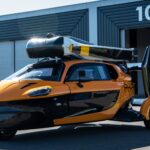2 UAE astronaut candidates prep for spacewalks with NASA in Houston
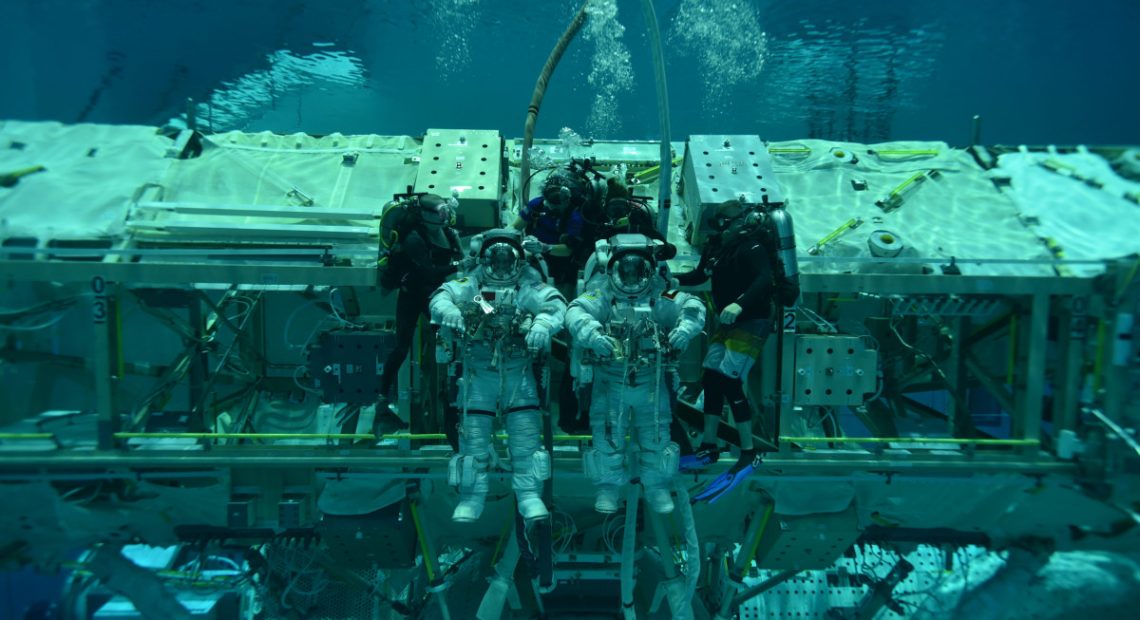
UAE astronaut candidates Nora Al Matrooshi and Mohammad Al Mulla are conducting high-intensity spacewalk training at NASA’s Neutral Buoyancy Laboratory (NBL) at the Johnson Space Center in Houston, Texas.
The two UAE nationals are part of NASA’s 2021 astronaut candidate class training programme.
The one-of-a-kind NBL is the world’s largest indoor pool and is used solely to prepare astronaut candidates and astronauts for space missions involving spacewalks or Extravehicular Activities (EVAs) currently involving the International Space Station (ISS).
The ISS is an ongoing partnership between Canada, Japan, Russia, and the United States, and 11 member states of the European Space Agency (Belgium, Denmark, France, Germany, Italy, Netherlands, Norway, Spain, Sweden, Switzerland, and the United Kingdom).
Al Matrooshi and Al Mulla are currently undergoing training at the massive NBL facility – which spans 202ft in length, 102ft in width, and 40ft in depth – to master the intricate procedures necessary for space exploration.
2 years of training
NASA’s 2021 astronaut class, the first new class in four years, began in January 2022 and includes a total of 12 astronaut candidates – 10 from the United States and two from the UAE – who are all undergoing an extensive on-ground training regime over a two-year period that concludes in 2024.
Al Matrooshi, 30, and Al Mulla. 34, are training alongside 10 of their NASA classmates and are set to graduate in early 2024 as flight-eligible astronauts.
The 12 astronaut candidates’ training is divided into five major categories: operating and maintaining the ISS’s complex systems, training for spacewalks, developing complex robotics skills, safely operating a T-38 training jet, and Russian language skills.
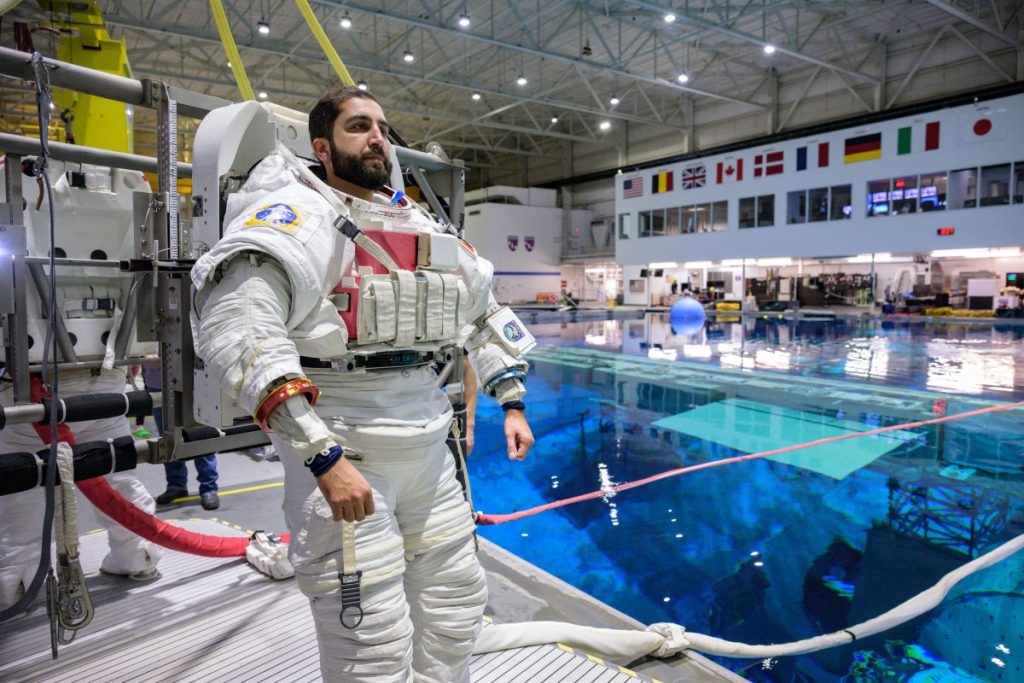
If successful at the end of the two-year training period, NASA may assign each of the 12 astronaut candidates to missions that involve performing research aboard the ISS.
The successful astronaut crew will launch from American soil on spacecraft built by commercial companies, and apart from ISS missions, they may also undertake missions to the Moon on NASA’s Orion spacecraft and Space Launch System rocket.
MBRSC representation
Al Matrooshi, a mechanical engineer by profession, and Al Mulla, a Dubai Police helicopter pilot, are part of the second batch of the UAE Astronaut Programme of the Dubai-based Mohammed Bin Rashid Space Centre (MBRSC).
The MBRSC manages the UAE Astronaut Programme under the UAE’s National Space Programme.
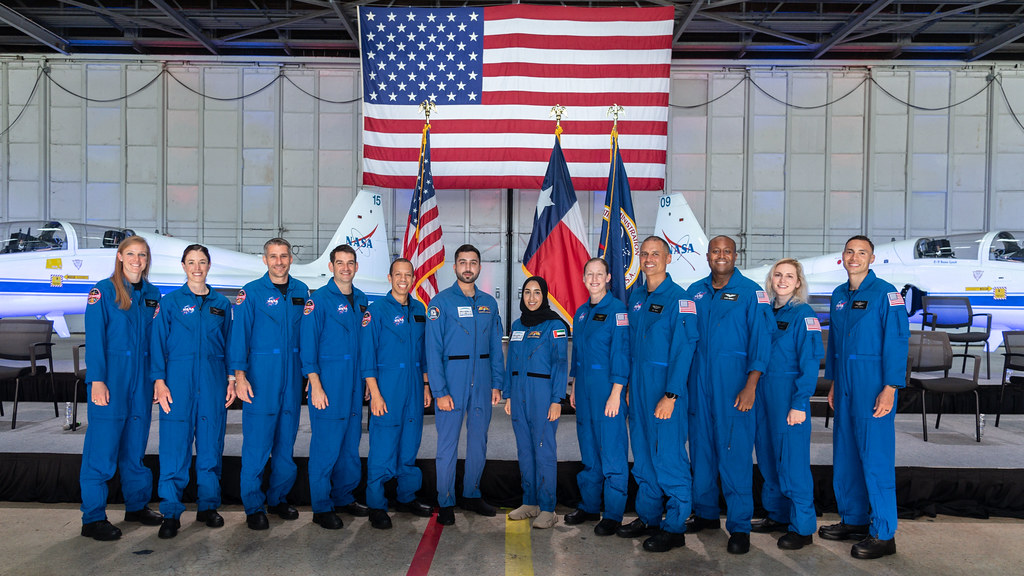
Spacewalks by astronauts are key to both current and future space exploration missions by NASA and its global space agencies’ partners, with the ISS alone requiring hundreds of hours of spacewalks by onboard astronauts for assembly and maintenance.
It is for such spacewalks that the two UAE astronaut candidates’ training at the NBL facility becomes vital to their future role in space missions involving NASA and the MBRSC.
In addition to spacewalk training the two UAE astronaut candidates recently underwent survival training at Fort Novosel in Alabama and a detailed astronaut preparation orientation programme at the Marshall Space Flight Center.
Historic first
In early 2023, UAE astronaut Sultan Al Neyadi from the MBRSC, who is currently onboard the International Space Station, became the first Arab astronaut to perform a spacewalk.
Prior to his mission to the ISS, Al Neyadi underwent spacewalk training for over 55 hours at the NBL, in preparation for his spacewalks.
During his time at the NBL facility, Al Neyadi underwent nine runs of six hours each, training underwater simulating spacewalks using a submerged scaled-up mock-up of the ISS.
Al Neyadi’s historic spacewalk, outside the orbiting ISS, was performed alongside NASA astronaut Stephen Bowen, and spanned seven hours and one minute and involved skilfully executing various tasks, which included routing power cables and laying the groundwork for the upcoming installation of the ISS Roll-Out Solar Array.
Al Neyadi is now nearing the end of the longest Arab space mission.
Last Updated on 1 year by Arnold Pinto






